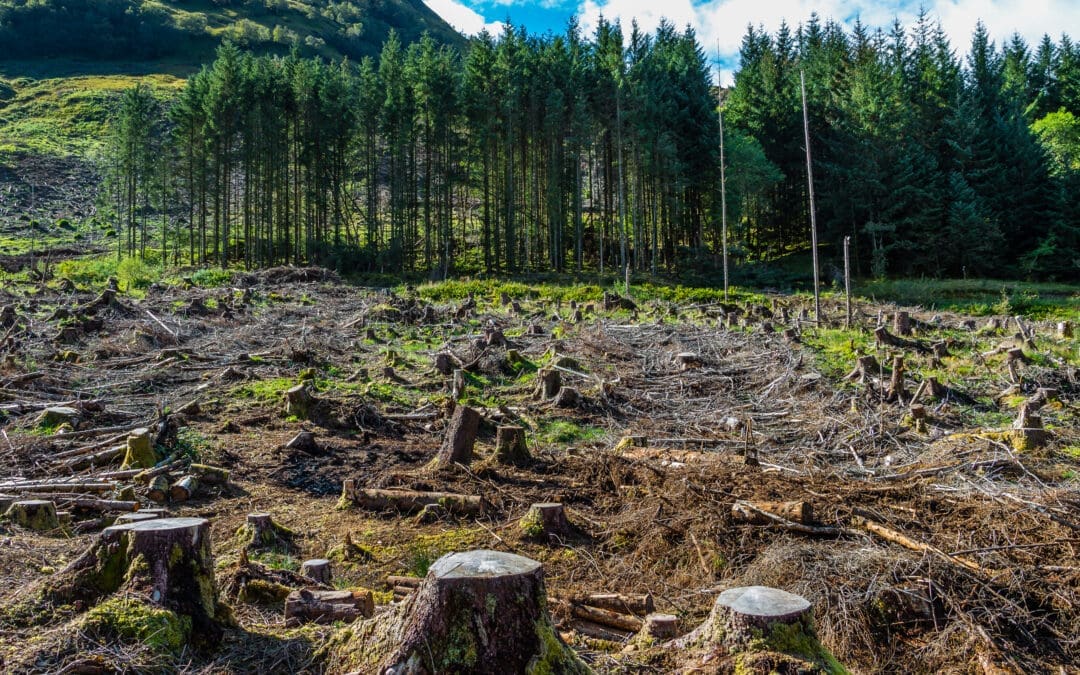In the wake of supply chain disruptions and global shortages, businesses are quickly recognizing the need for greater visibility over their supply network, from documenting the origin of material components to tracking shipments. To gain this kind of transparency, businesses must create a global map of their supply network, right down to the source.
Before we explore the why and how of supply chain mapping, it’s important to establish just what the term means. Simply defined, supply chain mapping is the process of capturing information from all suppliers or individuals involved in a company’s supply chain, so that the origin and flow of goods and services can be visualized from beginning to end.
The concept itself is relatively easy to grasp. However, once you factor in the complexities of today’s multi-tier supply webs, it gets harder and harder to gain end-to-end visibility.
In early 2021, the Association for Supply Chain Management (ASCM) gave the Economist Intelligence Unit (EIU) permission to dig deeper with a report into companies and their end-to-end supply chain visibility—The Resilient Supply Chain Benchmark. Of the 308 companies assessed, over half reportedly lack such visibility, leaving them vulnerable to a wide variety of supply chain risks.
These include—but are not limited to—shortages, shipping delays, costly material increases, a sudden surge in demand, reputational backlash for non-compliant social or environmental practices, or having to contend with natural disasters such as the black swan events of 2021.
But it’s not just about understanding risk. Supply chain mapping has plenty of more far-reaching benefits, too. We explain some of the biggest benefits below.
Benefits of Supply Chain Mapping
Supply chain mapping will aid your performance in several ways.
1) It will help streamline and speed up your supply chain processes. Understanding how your multi-tier supply chain is connected allows you to discover where delays stem from.
2) It will identify potential loss points and strengthen supplier relationships. By taking the first step to identify who your suppliers are, you can lay a foundation of two-way communication and set the stage for future collaboration efforts.
3) It increases resilience to future risk or disruption. Knowing who and where your suppliers are gives you a baseline understanding of what risks they might expose you to (for instance, deforestation risk in Southeast Asia). You can mitigate these risks ahead of time by running through scenarios of how your business would be affected if an N-tier supplier experienced a natural disaster, violated human rights regulations, etc.
4) It allows you to build stronger, more authentic relationships with customers. Today’s consumers want to know where their products come from, and that their purchases aren’t contributing to environmental and human rights violations. Sharing your supply chain transparency story with your customers is a great way to build trust and earn their loyalty.
5) It provides you with a valuable starting point for understanding supplier sustainability performance. As we explain in more detail below, supply chain mapping begins with determining who your suppliers are and where they operate. Once you’ve established this line of communication, collecting more detailed sustainability data is a logical next step.
Now that we understand the why of supply chain mapping, let’s move on to the how.
Step 1 – Get Your Tier 1 Suppliers On Board
To begin to understand the relationships in your supply chain, start by inviting your tier one, or direct suppliers, to join the mapping process. This can be done by sending out a very basic supplier assessment. You most likely already know most of your tier one suppliers, so it’s simply a matter of inviting them to use whatever mapping, survey, or assessment software you are using.
To maximize participation in your initiative, keep it short and sweet. Your assessment should only cover the essentials:
- Who are you?
- Where are you?
- What do you sell?
- Who are your suppliers?
Step 2 – Cascade Your Assessment Down the Supply Chain
Once you’ve opened a line of communication with your tier one suppliers, it’s time to take it a step further. For your supply chain map to have any real benefit, you must go beyond your direct suppliers.
You can think of this phase as supplier discovery. To uncover your N-tier suppliers and gain visibility to the source, request that your tier one suppliers send the same basic assessment to your tier two suppliers, or their direct suppliers. When executed properly, this invitation will cascade its way down the supply chain until it’s reached the source.
To ensure your supplier discovery assessment reaches your raw material suppliers, there are a few things you can do:
- Make the process valuable for your suppliers. Once you start compiling your data into a supply chain map, share this back to your suppliers. This allows both you and your suppliers to better understand risks and bottlenecks.
- Communicate often. To encourage your suppliers to respond, be sure you send frequent reminders, again reiterating the value they’ll gain by participating. Also emphasize that this survey will set the stage for future collaborative efforts between you and your suppliers. Their responsiveness will give you an idea of how workable they might be down the line.
- Use the right technology. Anything you can do to make the process more efficient for both you and your suppliers is a win, and using a supply chain mapping or sustainability platform is one of the best ways to do this. Some of these platforms will even automatically cascade your assessments down the supply chain, storing supplier information along the way to reduce future survey fatigue. Others may use geo-visualization software to populate supplier data into an easily digestible and shareable form.
If you have a large and complex supply chain with hundreds or even thousands of suppliers, you will likely find that supply chain mapping is simply not possible without using a platform. Check out the Gartner Market Guide for Supplier Sustainability Applications for an overview of the market and key features offered by the platforms identified. You’ll notice that supply chain mapping is a core feature of most, so take time to consider your other supplier sustainability needs beyond mapping, if any.
Step 3 – Build Your Map, Layer in Additional Data, and Identify Risks
Once you’ve completed your supplier discovery phase, it’s time to build your supply chain map. As mentioned above, if you’re using a supply chain mapping or sustainability platform, this process will happen automatically, often in real time. If you’re using tools like email and excel (suitable for small, relatively simple supply chains), create linkages between the supplier relationships you’ve identified. Keep in mind that you’ll likely have different supply chain maps for the different products you sell.
With a working map(s) in hand, you can now layer in additional data to identify risks and build resilience against future shocks.
One way to do this is by using 3rd party solutions. For instance, you could enhance your map with 3rd party risk data based on supplier location. This could give you an idea of natural disaster risk, forced labor risk, or other ESG related issues that are more common in certain areas of the world.
Using the same supplier assessment process, you could also collect additional data directly from your suppliers. For instance, perhaps your 3rd party risk data revealed that 35% of your suppliers operate in a region known for deforestation. You might follow up with a more granular assessment to document whether these suppliers are using certified sources, and if not, what steps they are taking to improve.
Finally, consider using automation software to include other procurement necessities in your visualization, such as payments, inventory updates, shipments, returns, etc. If you are using a separate supply chain mapping or sustainability software, these two systems should easily integrate with one another. This gives your procurement teams a user-friendly snapshot of the risks and opportunities in your supply chain.
By gathering the additional information suggested above, you can more easily identify long lead times, inflation, and unsustainable practices, saving you valuable time and resources and streamlining your procurement processes.
Thinking Forward
As your mapping program develops into a more robust supplier sustainability initiative, it’s vital to ensure that you never allow complacency to infiltrate your network. Keep motivating your suppliers to maintain collaboration where possible.
Remember that throughout your supply chain sustainability scheme, it’s essential that you keep track of data, potential siloes and make it as easy as possible for small suppliers—who might lack the resources necessary—to participate. Supply chain mapping is the first step towards gaining transparency. For the majority of companies, it has proven vital for maintaining sustainable supplier relationships.



